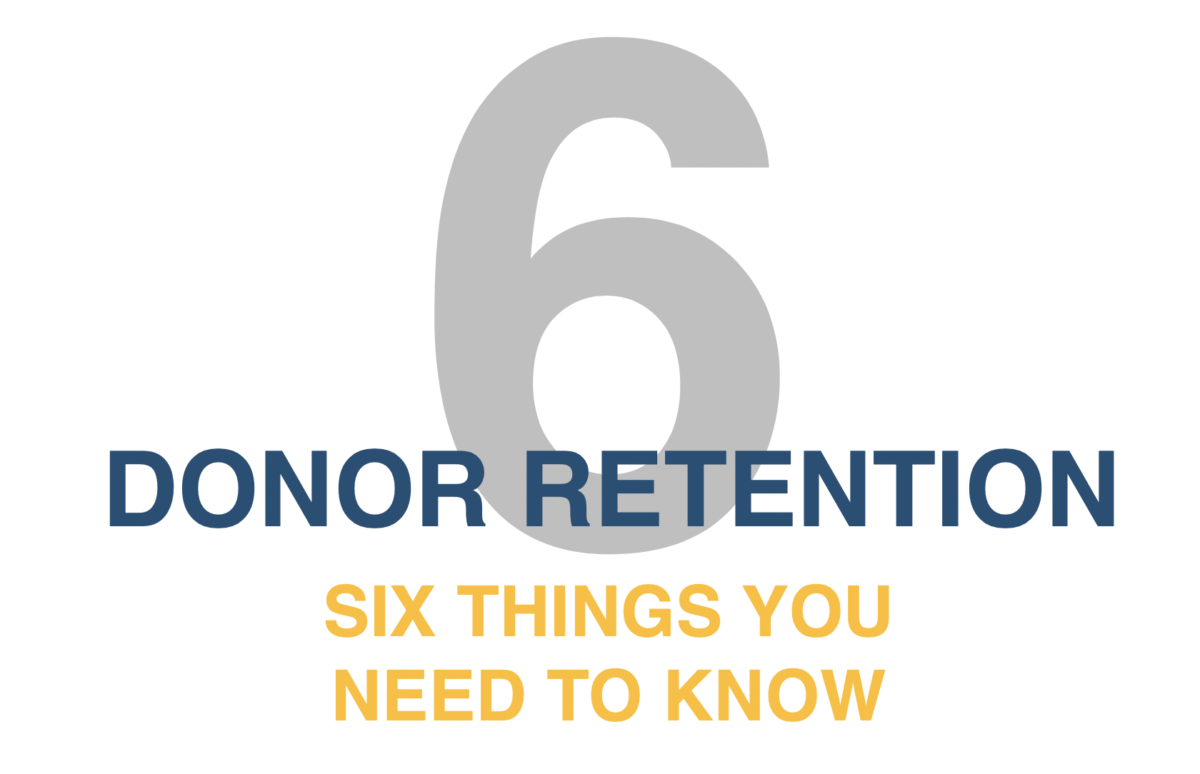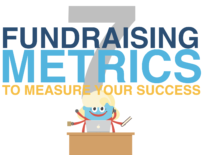Donor retention is one of the most important things to keep in mind when running a charity or a nonprofit. As we’ve discussed in the past, donor retention refers to the number of donors who gave to your organization last business period (year, quarter, etc.) that stuck around to give again this business period.
While maintaining high donor retention isn’t the only thing your organization should be striving for (the success of a charity is reliant on multiple metrics), it’s usually a sign of a successful, meaningful organization. However, it can alsobe one of the hardest to maximize. Let’s go over some of the key things you should know about donor retention.
1. How to Calculate Donor Retention Rate
For this metric, the calculation is ultra-simple. When calculating donor retention rate, simply divide the number of donors who donated last year by the number of donors from that previous year who donated again this year.
For example, let’s say you had 10 donors in 2019. In 2020, you had 11 donors. However, only 7 of those donors were from last year. You’d disregard the 4 new donors and focus only on the ones who stayed another year, putting your donor retention rate at 70%.
Generally, when it comes to donor retention rates, the higher the better. Keep in mind, this strategy for calculating donor retention rate is only the basic one – skip to number 4 on this list to find out about factors impacting calculation.
2. Donor Retention Rate is Closely Tied to Donor Acquisition Rate and Cost
Because donor retention rate is generally capped at 100%, combining a high donor retention rate with a high donor acquisition rate is key to growing your charity. Donor acquisition rate refers to the rate at which your organization is acquiring donors. Ideally, it should always be going up.
However, maintaining high donor acquisition can be extremely expensive depending on how much return per donor your organization receives in donations. This is why donor retention rates should always be prioritized – loyal donors are more lucrative than new donors.
However, this isn’t the only metric tied closely to donor retention – it’s also important to take lifetime value, lapsed donor rates, and donor reactivation into account.
3. High Donor Retention Doesn’t Always Signify High Donation Growth (and Vice Versa)
Although this is a given point (the two metrics, after all, have different labels), it’s important to remember that high donor retention doesn’t always signify donation growth – or high donation retention, for that matter.
Take the calculation that was done in the first point on this list. We’ll recap it: This year, you had eleven donors. However, only seven of those donors were from last year. Your donor retention rate is now at 70% for this year.
Now, those seven donors may have been leaving sizable donations, in which case your donation growth has likely not been affected negatively by losing those four donors. In contrast, the four who left may have been extremely generous donors with a potential lifetime value worth all of your retained donors combined. This means that the acquisition cost of all those seven donors may have actually been higher than their lifetime values.
This is why it’s important to take multiple metrics into account – not just donor retention.
4. Be Aware of Different Retention Periods for Donors
Although most of the time, donor retention is referred to as being the donors who donated last year that donated again this year, these donors are not the only types of retained donors you should be looking at – in fact, distinguishing the different types of donors might be crucial to maintaining your charity.
In order to maximize the use of metric analytics, it might also be useful to take into account first-year retained donors, monthly retained donors, or multi-year retained donors. Depending on the business period at which you’re looking (quarter, month, year, etc.), applying different retention periods to your analytics is helpful for determining which short-term programs work, as well as which donors are downgrading (and why).
It can also assist you in understanding the donor lifespan for your individual organization, and all the patterns and trends (if there are any) that come with that lifespan. You may begin to notice downgrading after a certain time frame or disengagement within several months. By understanding the phases of the donor lifespan for your charity, you can work to keep donors engaged for longer periods of time, and thus maximize donor retention.
5. How to Analyze Your Lapsed Donors
Sure, this point isn’t specifically about donor retention, but it highlights a crucial point for encouraging donor reactivation (donors who came back after leaving). Lapsed donor reports should be your retention bible – they can help you understand what you did wrong and which demographic is typically leaving.
Once you’ve gotten into the habit of monitoring phases of the donor lifespan (circa the fourth point on this list), you can pinpoint exactly how long each lapsed donor spent with your organization before they left. You can also figure out what their behavior was before leaving – did they downgrade? Did they upgrade? Did they gradually space out their donations more and more before finally pulling the plug?
When you understand how to analyze your lapsed donors, you can anticipate what will keep your retained donors at your organization. You can focus in on the core demographics of your charity, and cater specifically to those demographics and desires.
6. How to Grow Donor Retention Rate
Here it is – the reason you probably clicked on this article. Growing donor retention rate is a huge goal for fundraising organizations, right up there with maximizing donation growth rate and minimizing lapsed donor rates.
How does an organization boost its retention rate? Well, the answer to that question varies based on each organization. It’s difficult to put a one-size-fits-all rule for every single charity that will effectively help that charity. However, what is true of growing donor retention is this: know thy metrics.
Knowledge is power. Power is influence. When you have all the numbers on the table and can confidently say that you know your demographics, donor LTV, acquisition cost, and donation growth rates, you have already taken the first step toward maximizing donor retention rates.
By combining metrics and analyzing them carefully, you can truly begin to understand what it is that your donors want, and why they chose your organization. After all, growing the donor retention rate of your charity is centered around the donors themselves!





Even though donor retention is an issue that rightfully gets a lot of attention, it’s important to remember that there are some donors who do not want a relationship with you.
Absolutely! There’s a lot of detail behind the big picture of retention, and knowing the details can make all the difference.